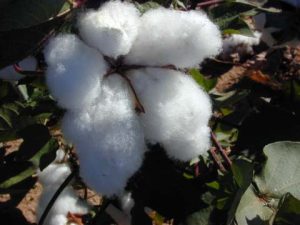From the report “Canopy-scale wavelength and vegetative index sensitivities to cotton growth parameters and nitrogen status“, de T. B. Raper, J. J. Varco, published in Precision Agric (2015) 16:62–76

Temporal and spatial variability of plant available N in the humid southeastern region of the United States often results in within-field over- and under- application of this nutrient to cotton. Although ground-based canopy reflectance has the potential to quantify crop N status in real-time and drive variable rate fertilizer N applications, currently utilized vegetation indices often fail to correlate strongly with crop N status. Analysis of wavelength sensitivities indicated reflectance near 670 nm was most highly correlated to plant height, but relatively poorly correlated to lint yield, total plant N content and leaf N concentration. The strongest wavelength correlations with leaf N concentration, lint yield and plant total N content were noted near 700 nm. Subsequent analysis indicated indices utilizing reflectance in the red edge region correlated more strongly to leaf N status and total plant N content when compared to indices relying on reflectance in green or red regions.
